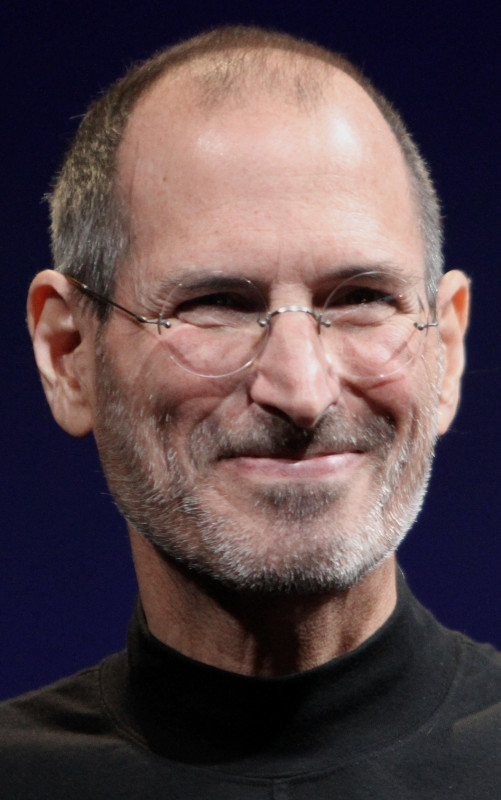Steve Jobs was a pivotal figure in the personal computer revolution. As co-founder of Apple Inc., he spearheaded the development of groundbreaking products, transforming the technology industry. He also founded NeXT and led Pixar to unprecedented success in animation. Jobs was renowned for his innovative vision, design aesthetic, and relentless pursuit of perfection, shaping the landscape of modern technology and entertainment.
2 days ago : Steve Jobs Designed Original Mac Calculator: A 10-Minute Menu Experiment
Steve Jobs influenced the original Macintosh calculator design. He spent only 10 minutes playing with menus and provided key insights. His design choices shaped the calculator's user experience, resolving critiques and finalizing the app.
February 1946: Marriage of Paul Jobs and Clara Hagopian
In February 1946, Paul Jobs and Clara Hagopian married and moved to Wisconsin.
1955: Jobs' Birth and Adoption
In 1955, Steve Jobs was born in San Francisco and was adopted shortly afterward.
1955: Adoption of Steve Jobs
In 1955, after initial refusal by his biological mother, Steve Jobs was adopted by Paul Reinhold Jobs and his wife Clara.
1957: Adoption of Patricia Jobs
In 1957, Paul and Clara Jobs adopted Jobs's sister Patricia.
1959: Move to Mountain View, California
By 1959, the Jobs family had moved to the Monta Loma neighborhood in Mountain View, California.
1962: Schieble and Jandali divorced
In 1962, Joanne Schieble and Abdulfattah Jandali divorced, and he lost contact with their daughter, Mona, for a time.
1967: Move to Cupertino
In 1967, the Jobs family moved to a new home in Cupertino, California, allowing Steve to change schools.
1968: Summer Job at Hewlett-Packard
In 1968, when he was 13, Jobs was given a summer job by Bill Hewlett (of Hewlett-Packard) after Jobs cold-called him to ask for parts for an electronics project.
1968: First Year at Homestead High School
In late 1968, Jobs began his first year at Homestead High School, where he met Bill Fernandez and Steve Wozniak.
1970: Shift in Interests
During mid-1970, Jobs underwent a change, developing interests in music and literature alongside science and technology.
1970: Schieble raised Mona alone
In 1970, after divorcing her second husband, George Simpson, Joanne Schieble took Mona to Los Angeles and raised her alone.
October 1971: Inspiration from Esquire Article
In October 1971, Wozniak was inspired by the article "Secrets of the Little Blue Box" from the Esquire magazine to create the 'blue box'.
1971: Visits to UC Berkeley and Freshman English Class at Stanford
In 1971, Jobs would visit Steve Wozniak at the University of California, Berkeley and by his senior year in late 1971, he was taking a freshman English class at Stanford.
September 1972: Enrollment at Reed College
In September 1972, Steve Jobs enrolled at Reed College in Portland, Oregon.
1972: Attendance and Withdrawal from Reed College
In 1972, Steve Jobs attended Reed College before withdrawing from it later that same year.
1972: LSD Use and Living with Brennan
In 1972, Steve Jobs began using LSD and rented a house with Chrisann Brennan before leaving for Reed College.
September 1973: Death of Neem Karoli Baba
Neem Karoli Baba died in September 1973. His death was significant to Jobs's spiritual journey in India later.
1973: Wozniak's Pong Version
Back in 1973, Steve Wozniak designed his own version of the classic video game Pong and gave its electronics board to Jobs.
February 1974: Hired by Atari
In February 1974, Steve Jobs returned to his parents' home and was hired by Atari, Inc. as a computer technician.
1974: Jandali abandoned students on a trip to Egypt
According to the San Francisco Chronicle, the reason why Steve Jobs had no interest in meeting Jandali was finding a Seattle Times article about Jandali's abandonment of his students on a trip to Egypt in 1974.
1974: Travels Through India
In 1974, Jobs traveled through India, seeking enlightenment and later studying Zen Buddhism.
1974: Travels to India for Spiritual Teachings
In 1974, Steve Jobs traveled to India to visit Neem Karoli Baba at his Kainchi ashram with Daniel Kottke, seeking spiritual teachings.
1975: Creation of Breakout Circuit Board
In 1975, Jobs was assigned to create a circuit board for the arcade video game Breakout, which he collaborated on with Wozniak. Wozniak reduced the TTL count to 45 within four days.
1976: Co-founding of Apple
In 1976, Steve Jobs and Steve Wozniak co-founded Apple to develop and sell Wozniak's Apple I personal computer.
1976: Founding of Apple Computer and Production of Apple I
In 1976, Steve Jobs had the idea to sell the Apple I computer, designed by Wozniak, leading to the founding of Apple Computer. They constructed Apple I prototypes by hand, funding it by selling some of their belongings. Eventually, 200 units were produced. The Apple I included video display terminal circuitry, allowing it to connect to a low-cost composite video monitor or television.
June 10, 1977: First Sale of Apple II
On June 10, 1977, the Apple II was first sold. The Apple II is an 8-bit home computer and one of the world's first highly successful mass-produced microcomputer products.
1978: Development of Lisa Computer
In 1978, Apple began developing the Lisa, a personal computer aimed at business users. It was the first personal computer with a graphical user interface.
1979: Xerox Alto Inspiration
In 1979, Jobs saw the commercial potential of the Xerox Alto, which had a mouse-driven interface and a GUI.
1982: Jobs Takes Over Macintosh Project
In 1982, after being forced out of the Lisa project, Steve Jobs took over the Macintosh project, incorporating inspiration from the Lisa. The final Lisa 2/10 was modified and sold as the Macintosh XL.
1983: Development of Apple Lisa
In 1983, the Apple Lisa was developed, though it was largely unsuccessful.
1984: Launch of Macintosh
In 1984, the Macintosh was launched, becoming the first mass-produced computer with a GUI.
1985: Departure from Apple and Founding of NeXT
In 1985, Jobs departed Apple after a power struggle and founded NeXT, a computer platform development company.
1985: Jobs commented on money
In 1985, Steve Jobs stated, "You know, my main reaction to this money thing is that it's humorous, all the attention to it, because it's hardly the most insightful or valuable thing that's happened to me."
1985: Jobs Starts NeXT
In 1985, after being forced out of Apple, Steve Jobs started NeXT, a workstation computer company.
1985: Desktop Publishing Industry Launch
In 1985, the desktop publishing industry was launched with the addition of the Apple LaserWriter.
1986: Clara Jobs diagnosed with lung cancer
In 1986, Clara Jobs, Steve Jobs's adoptive mother, was diagnosed with lung cancer. This prompted Jobs to learn more about his adoption and search for his biological mother.
1986: Acquisition of Pixar
In 1986, Jobs bought the computer graphics division of Lucasfilm, which was spun off as Pixar.
1986: Jobs contacted Schieble after Clara died
In 1986, Steve Jobs contacted his birth mother, Joanne Schieble, after Clara died. He did so after getting permission from his adoptive father, Paul Jobs.
1986: Jobs Funds the Spinout of Pixar
In 1986, Steve Jobs funded the spinout of The Graphics Group from Lucasfilm's computer graphics division for $10 million, renaming it Pixar.
October 12, 1988: NeXT Computer Launch
On October 12, 1988, the NeXT computer was unveiled at a lavish, invitation-only gala launch event held at the Louise M. Davies Symphony Hall in San Francisco. The event was considered Steve Jobs's comeback and was described as a multimedia extravaganza.
1988: Introduction of the NeXT Computer
In 1988, the NeXT Computer was introduced at a lavish launch event. The world's first web browser, WorldWideWeb, was created using the NeXT Computer. The NeXT Computer's operating system, NeXTSTEP, begat Darwin, which is now the foundation of most of Apple's operating systems.
1989: Jobs met Laurene Powell
In 1989, Steve Jobs met his future wife, Laurene Powell, when he gave a lecture at the Stanford Graduate School of Business, where she was a student. He was immediately smitten with her.
1990: Release of NeXT Workstations and Invention of the World Wide Web
In 1990, NeXT workstations were first released, priced at $9,999. Also in 1990, English computer scientist Tim Berners-Lee invented the World Wide Web using a NeXT computer at CERN in Switzerland.
1990: Release of the Second Generation NeXTcube
In 1990, the revised, second generation NeXTcube was released. Jobs touted it as the first "interpersonal" computer that would replace the personal computer. With its innovative NeXTMail multimedia email system, NeXTcube could share voice, image, graphics, and video in email for the first time.
1990: Jobs proposed to Laurene Powell
Steve Jobs proposed to Laurene Powell on New Year's Day in 1990.
March 18, 1991: Jobs married Laurene Powell
On March 18, 1991, Steve Jobs and Laurene Powell married in a Buddhist ceremony at the Ahwahnee Hotel in Yosemite National Park. The ceremony was conducted by Jobs's guru, Kobun Chino Otogawa, with fifty people in attendance.
1991: Birth of Reed Jobs
In 1991, Reed Jobs, the first child of Steve Jobs and Laurene Powell, was born.
1992: Simpson fictionalized the search for their father in her novel
In 1992, Mona Simpson fictionalized the search for their father in her novel "The Lost Father".
March 5, 1993: Death of Paul Jobs
On March 5, 1993, Paul Jobs, Steve Jobs's father, passed away.
1993: NeXT Transitions to Software Development
In 1993, after selling only 50,000 machines, NeXT transitioned fully to software development with the release of NeXTSTEP/Intel.
1994: NeXT Reports First Yearly Profit
In 1994, NeXT reported its first yearly profit of $1.03 million.
1994: Interview Regarding Blue Boxes
In a 1994 interview, Steve Jobs recalled that it took six months for him and Wozniak to design the blue boxes.
1995: Birth of Erin Jobs
In 1995, Erin Jobs, Steve Jobs's daughter, was born.
1995: Release of Toy Story
In 1995, Pixar produced the first computer-animated feature film, Toy Story.
1996: Apple was struggling and depended on completing its next operating system.
In 1996, Jobs's former company Apple was struggling and its survival depended on completing its next operating system. After failed negotiations to purchase Be Inc., Apple eventually came to a deal with NeXT in December for $400 million
1996: Release of WebObjects
In 1996, NeXT Software, Inc. released WebObjects, a framework for Web application development.
February 1997: Finalization of Apple's Acquisition of NeXT
In February 1997, Apple finalized its deal to acquire NeXT for $400 million, bringing Steve Jobs back to the company he had cofounded.
July 1997: Jobs Becomes De Facto Chief of Apple
In July 1997, Steve Jobs became de facto chief of Apple after then-CEO Gil Amelio was ousted.
October 6, 1997: Michael Dell's Comment on Apple
On October 6, 1997, at a Gartner Symposium, Michael Dell was asked what he would do if he ran Apple, and he said he would shut it down and give the money back to the shareholders, continuing Jobs's public war of words with Dell.
1997: Return to Apple as CEO
In 1997, Steve Jobs returned to Apple as CEO after Apple's acquisition of NeXT.
1997: Return to Apple and elimination of philanthropic programs
Upon his 1997 return to Apple, Steve Jobs optimized the failing company to the core, such as eliminating all philanthropic programs, never to be restored.
March 1998: Jobs Terminates Several Projects at Apple
In March 1998, to concentrate Apple's efforts on returning to profitability, Steve Jobs terminated several projects, such as Newton, Cyberdog, and OpenDoc.
1998: Introduction of the iMac G3
In 1998, Apple's iMac G3 was introduced, featuring an innovative design directly resulting from Steve Jobs's return to Apple. The iMac's changes included eschewing the floppy disk drive and moving exclusively to USB for connecting peripherals.
1998: Phasing Out of the Macintosh Name
Since 1998, Apple has phased out the "Macintosh" name in favor of "Mac", though the product family has been nicknamed "Mac" or "the Mac" since inception.
1999: Board Member at Gap Inc.
From 1999, Steve Jobs was a board member at Gap Inc.
1999: Introduction of Graphite Gray Apple iMac
In 1999, Apple introduced the Graphite gray Apple iMac. The shape, color and size have since varied, but it maintained the all-in-one design. Design ideas were intended to create a connection with the user such as the handle and a "breathing" light effect when the computer went to sleep. The Apple iMac sold for $1,299 at that time.
2000: Jobs Becomes Permanent CEO of Apple
At the 2000 Macworld Expo, Steve Jobs officially dropped the "interim" modifier from his title at Apple and became permanent CEO.
October 23, 2001: Release of the First Generation iPod
On October 23, 2001, the first generation of iPod was released. Its small size was achieved by using a 1.8" hard drive. The introduction of the iPod resulted in Apple becoming a major player in the music industry and prepared the way for the iTunes music store and the iPhone.
2001: Jobs was granted stock options in the amount of 7.5 million shares of Apple
In 2001, Jobs was granted stock options in the amount of 7.5 million shares of Apple with an exercise price of $18.30.
2001: Release of Monsters, Inc.
In 2001, Pixar released Monsters, Inc., which became a box-office hit.
2002: End of term as Board Member at Gap Inc.
Until 2002, Steve Jobs was a board member at Gap Inc.
October 2003: Jobs Diagnosed with Cancer
In October 2003, Steve Jobs was diagnosed with cancer.
2003: Diagnosis of Pancreatic Neuroendocrine Tumor
In 2003, Steve Jobs was diagnosed with a pancreatic neuroendocrine tumor.
2003: the options granted to him were returned without being exercised in 2003.
the options granted to him were returned without being exercised in 2003.
January 2004: Jobs Announces He Will Not Deal with Disney Again
In January 2004, Steve Jobs announced that he would never deal with Disney again after failed negotiations with Disney's chief executive, Michael Eisner, to renew Pixar's contract. Negotiations had been attempted in 2003.
2004: Jobs Announces Cancer Diagnosis to Employees
In mid 2004, Steve Jobs announced to his employees that he had a cancerous tumor in his pancreas, a rare, less aggressive type, known as islet cell neuroendocrine tumor.
2005: Apple Responds to E-Waste Recycling Criticism
In 2005, Steve Jobs responded to criticism of Apple's poor recycling programs for e-waste by lashing out at environmental advocates. Apple later announced it would take back iPods for free at its retail stores.
2005: Stanford Commencement Speech
In a 2005 commencement speech at Stanford University, Steve Jobs spoke about dropping in on a calligraphy course and its influence on the Mac's typography.
January 2006: Cancer Recurrence
In January 2006, it was known only to a select few that Steve Jobs's cancer had returned. Jobs confided in Bob Iger that he hoped to live until his son Reed's high school graduation in 2010.
August 2006: WWDC Keynote and Health Speculation
In August 2006, Steve Jobs delivered the keynote at Apple's Worldwide Developers Conference (WWDC). His thin appearance and listless delivery led to media and internet speculation about his health. Despite this, an Apple spokesperson stated that "Steve's health is robust."
December 29, 2006: Apple Investigation Finds Jobs Unaware of Stock Options Issues
On December 29, 2006, an independent internal Apple investigation found that Steve Jobs was unaware of issues related to backdated stock options granted to him in 2001 and that the options were returned without being exercised in 2003.
2006: Apple Expands Recycling Programs
In 2006, Apple further expanded its recycling programs to any US customer who buys a new Mac, including shipping and environmentally friendly disposal of old systems.
2006: Jobs Emailed All Employees When Apple's Market Capitalization Rose Above Dell's
In 2006, Jobs emailed all employees when Apple's market capitalization rose above Dell's.
January 2007: Jobs Quotes Wayne Gretzky at Macworld Conference
At the end of his keynote speech at the Macworld Conference and Expo in January 2007, Steve Jobs summed up his self-concept by quoting ice hockey player Wayne Gretzky.
June 29, 2007: Introduction of the iPhone
On June 29, 2007, Apple entered the cellular phone business with the introduction of the iPhone, a multi-touch display cell phone, which also included the features of an iPod and revolutionized mobile browsing.
2007: Apple listed among America's least philanthropic companies
In 2007, Stanford Social Innovation Review magazine listed Apple among "America's least philanthropic companies".
July 1, 2008: $7 Billion Class Action Suit Filed Against Apple Board Members
On July 1, 2008, a $7 billion class action suit was filed against several members of the Apple board of directors for revenue lost because of alleged securities fraud.
July 2008: Release of the iPhone 3G
In July 2008, Apple released the iPhone 3G. It featured support for GPS, 3G data, and tri-band UMTS/HSDPA.
August 28, 2008: Bloomberg's Mistaken Obituary
On August 28, 2008, Bloomberg mistakenly published a 2500-word obituary of Steve Jobs, intensifying rumors about his health, despite the error being quickly rectified.
September 2008: Jobs Responds to Death Rumors
In September 2008, at Apple's Let's Rock keynote, Steve Jobs responded to the death rumors by paraphrasing Mark Twain, saying, "The reports of my death are greatly exaggerated." He later presented his blood pressure as "110/70" to further dismiss health concerns.
December 16, 2008: Schiller to Deliver Macworld Keynote
On December 16, 2008, Apple announced that Phil Schiller would deliver the company's final keynote address at the Macworld Conference and Expo 2009, renewing concerns regarding Steve Jobs's health.
2008: Health Concerns Following WWDC Keynote
In 2008, similar concerns arose following Steve Jobs's WWDC keynote address. Apple officials attributed his condition to a "common bug," while others speculated it was due to the Whipple procedure. Despite repeated questions, Jobs's health was largely dismissed as a "private matter" by Apple, while some believed shareholders had a right to know more.
January 5, 2009: Jobs Announces Hormone Imbalance
On January 5, 2009, Steve Jobs announced on Apple.com that he had been suffering from a "hormone imbalance" for several months.
January 14, 2009: Jobs Announces Leave of Absence
On January 14, 2009, Steve Jobs announced in an internal Apple memo that his health-related issues were more complex than initially thought and that he would take a six-month leave of absence until the end of June 2009.
June 2009: Introduction of the iPhone 3GS
In June 2009, Phil Schiller introduced the iPhone 3GS. The improvements included voice control, a better camera, and a faster processor.
June 2009: End of Jobs' Leave of Absence
June 2009 marked the end of Steve Jobs' six-month leave of absence, which he had taken to focus on his health. Tim Cook served as acting CEO during this period.
2009: Roy E. Disney's Death
Roy E. Disney, a Disney family member who criticized Michael Eisner for souring Disney's relationship with Pixar, died in 2009.
April 3, 2010: Release of the First iPad
On April 3, 2010, the first iPad was released. It is an iOS-based line of tablet computers designed and marketed by Apple.

2010: Jobs declined to sign The Giving Pledge
In 2010, Steve Jobs declined to sign The Giving Pledge, launched by Warren Buffett and Bill Gates for fellow billionaires.
2010: iPhone included in All-TIME 100 Gadgets list
In 2010, Time included the iPhone in the All-TIME 100 Gadgets list, in the category of Communication.
October 5, 2011: Death of Steve Jobs
October 5, 2011 marks the date of Steve Jobs's death. He was an American businessman, inventor, and investor best known for co-founding Apple Inc.
October 7, 2011: Private Funeral Held for Steve Jobs
On October 7, 2011, a small private funeral was held for Steve Jobs. The details were not made public out of respect for his family.
October 2011: Introduction of the iPhone 4s
In October 2011, the iPhone 4s was introduced. A major feature of the iPhone 4s was Siri, a virtual assistant capable of voice recognition.
October 16, 2011: Steve Jobs Day and Memorial at Stanford
On October 16, 2011, California Governor Jerry Brown declared it to be "Steve Jobs Day". On that day, an invitation-only memorial was held at Stanford University with high security. Attendees included tech company executives, media, celebrities, politicians, and Jobs's family and friends.
2011: Death of Steve Jobs
In 2011, Steve Jobs died of tumor-related respiratory arrest.
2011: Apple Becomes World's Most Valuable Company
In 2011, the success of Apple's unique products and services propelled it to become the world's most valuable publicly traded company.
2011: Jobs Complains to Obama About Software Engineer Shortage
In a 2011 interview, Steve Jobs revealed that he had met with US President Barack Obama, complained about the nation's shortage of software engineers, and proposed offering green cards to foreign students with engineering degrees.
2012: Release of Brave and Tribute to Jobs
In 2012, Brave, Pixar's first film produced since Steve Jobs's death, was released and honored him with a tribute for his contributions to the studio.
2013: Declaration of Historic Site
In 2013, The Jobs' family house in Los Altos was declared a historic site as the first site of Apple Computer.
June 2014: Edwin Catmull Reveals Jobs's Advice
In early June 2014, Pixar cofounder Edwin Catmull revealed that Steve Jobs once advised him to "just explain it to them until they understand" in disagreements.
2019: Bob Iger Recalls Warnings About Steve Jobs
In 2019, after Steve Jobs's death, Bob Iger recalled that many warned him about Jobs, "that he would bully me and everyone else".
2022: Posthumous Award of Presidential Medal of Freedom
In 2022, Steve Jobs was posthumously awarded the Presidential Medal of Freedom.
2024: Value of Atari Offer Adjusted for Inflation
In 1975, Atari offered $100 for each TTL chip eliminated in the Breakout machine. In 2024, that sum is equivalent to about $600.
Mentioned in this timeline
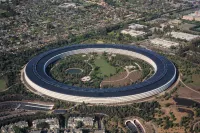
Apple Inc founded in and headquartered in Cupertino California is...
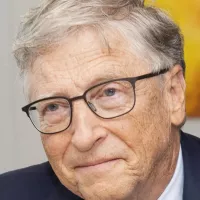
Bill Gates an American businessman and philanthropist revolutionized personal computing...

Robert Iger is an American media executive known for his...
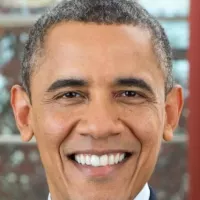
Barack Obama the th U S President - was the...
California is a U S state on the Pacific Coast...

Wayne Gretzky a Canadian former professional ice hockey player widely...
Trending
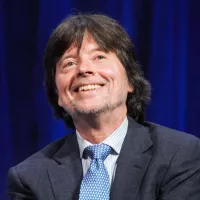
5 months ago Ken Burns' documentary aims to unite US; Filmmakers emulate Burns' style.

6 months ago Kelsea Ballerini Shines at ACM Awards with Chase Stokes; Reveals Performance Details.
Bruce Brown Jr is a professional basketball player currently with the Denver Nuggets of the NBA Drafted nd overall in...

5 months ago Aaron Gordon's Clutch Performances Drive Denver Nuggets' Playoff Success and Fan Acclaim.

14 days ago Ronda Rousey criticizes Joe Rogan's fighting experience and reflects on fan reactions.

21 days ago Jamal Murray and Nikola Joki? discussed by David Adelman; Nuggets face Warriors and Suns.
Popular
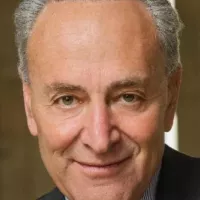
Chuck Schumer is the senior United States Senator from New...

Bernie Sanders is a prominent American politician currently serving as...

Candace Owens is an American political commentator and author known...
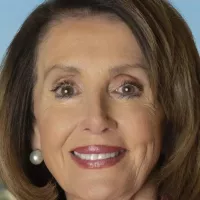
Nancy Pelosi is a prominent American politician notably serving as...

XXXTentacion born Jahseh Dwayne Ricardo Onfroy was a controversial yet...
Nicholas J Fuentes is a far-right political commentator and activist...
